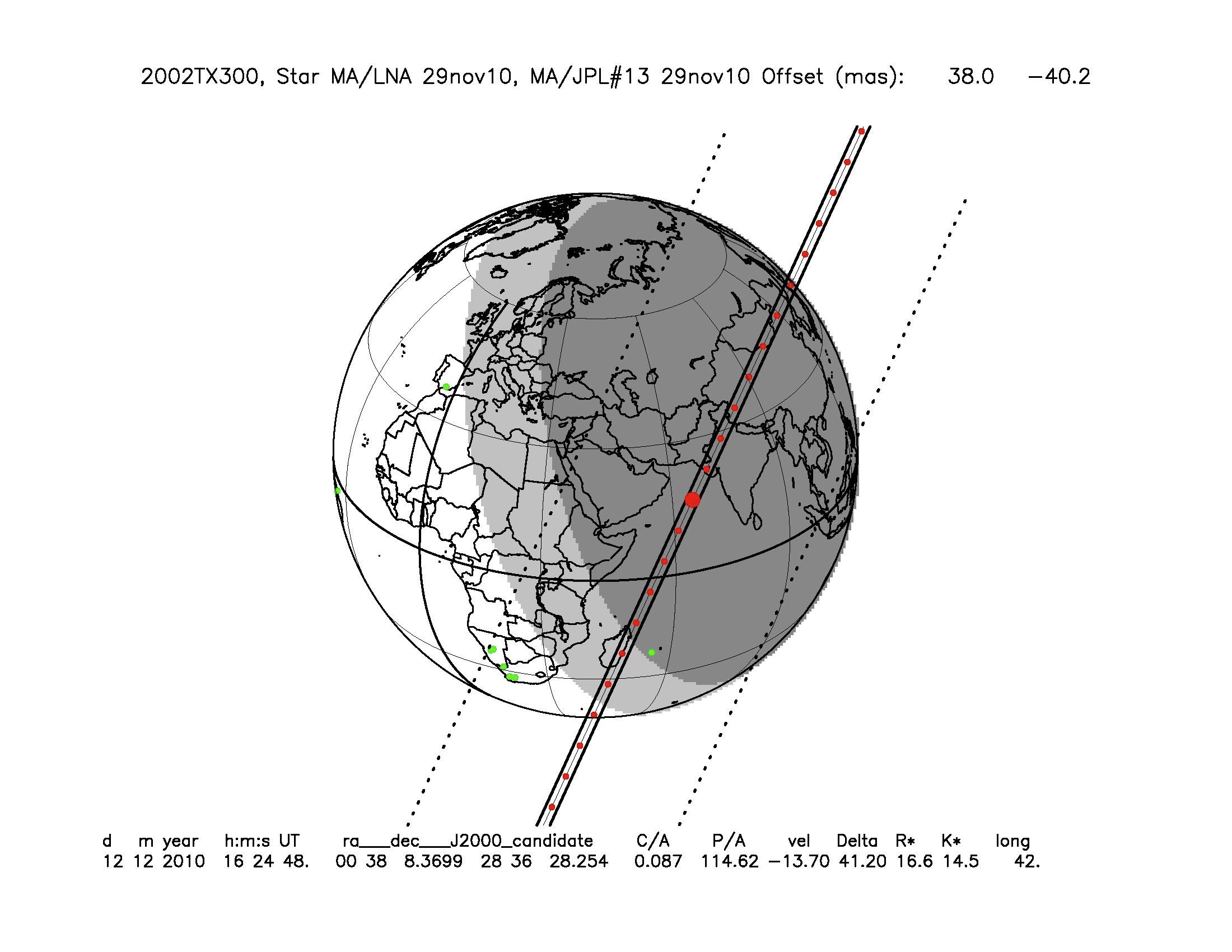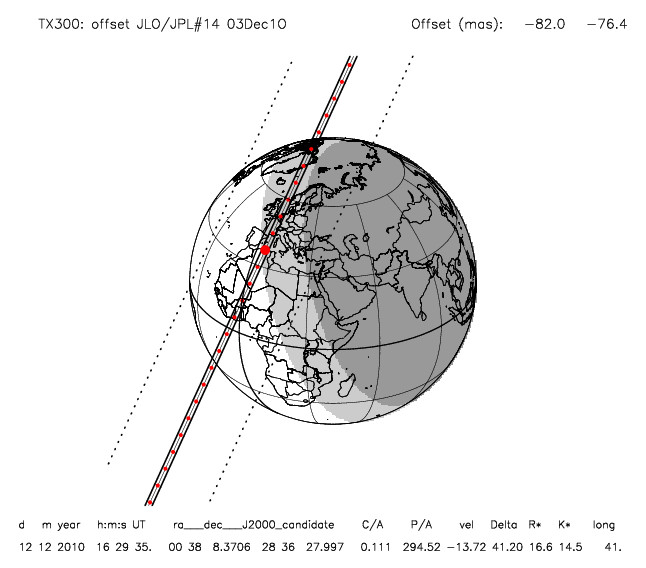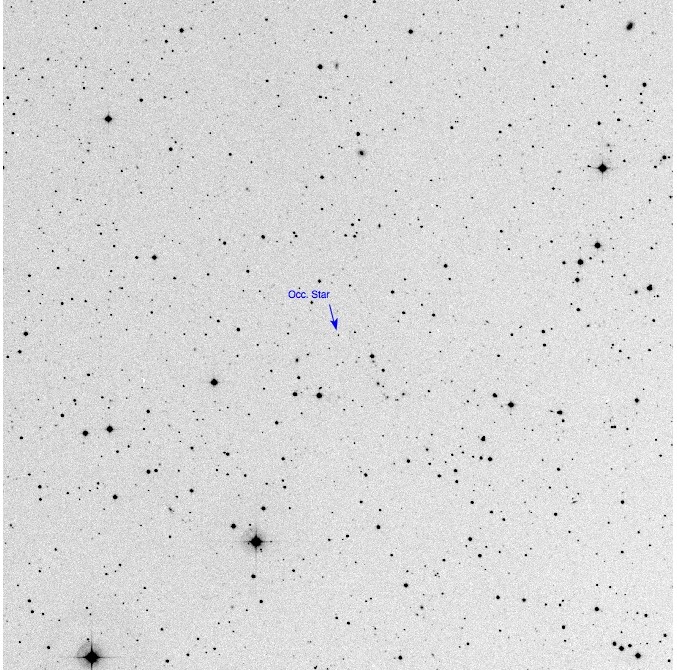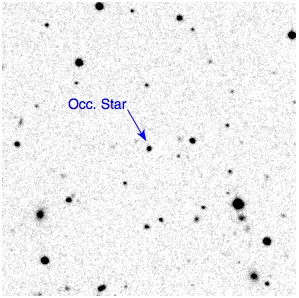
|
On 12 December 2010 around 16:25 UT (night of December 12th to 13th, 2010),
the Trans-Neptunian Object "2002 TX300" -- a member of the Haumea family --
may occult a star with:
V ~ 17.4
R ~ 17.0
I ~ 16.4
K ~ 15.0
(see the Vizier output ).
The event could be visible from Indian Ocean and India, Asia, but also from
Russia, Middle-East and possibly, E. Europe, see maps below.
Astrometric J2000 position of the star:
(Assafin et al, Rio de Janeiro group, update 29 Nov. 2010, based on data collected
at Pico dos Dias, Brazil)
α= 00h 38mn 08.3699 sec
δ= +28d 36' 28.254"
The corresponding star apparent airless position of the day is:
α= 00h 38mn 44.9 sec
δ= +28d 40' 22"
We give below recent updates.
Notes:
- the shadow on maps below moves from upper right to lower left.
- the larger dot is geocentric closest approach (corresponding to the time "h:m:s UT" given below the map).
- small dots are plotted every minute.
- the width of shadow is 290 km.
This is based on a stellar occultation observed in October 2009, with two positive chords detected.
Assuming a circular shape Elliot et al. 2010 (Nature, 17 June 2010) derive a diameter of 286 +/- 10km.
Elongated or irregular shapes are not ruled our, though.
- 2002 TX300's offset in ra and dec are given in the upper right corner of map, wrt the JPL#13 ephemeris.
- the event may last for more than 20 seconds.
- Geocentric mid-time should between 16:25 UT, with an uncertainty of more than +/- 5 minutes.
So, it would be wise to observe a minimum +/- 20 mn around specific predicted times.
- the star has V ~ 17.4, R ~ 17, I ~ 16, so that 1m-sized scopes are
required. But if you think that you can make it with a smaller telescopes with
a sensitive camera and several sec exposures, go for it!
(Remember that even with several sec exposures, usefull science can be
derived: accurate size determination)
- if the download of your individual images is slow, say 5 sec, it is useless
to have 5-sec exposures, as half the time will be lost in downloads ("dead
times"). Then it is better to have, say 10-sec exposures or more, so that the
probability that the dis(re)-appearance occurs during an exposure remains high.
Remember that dead times may be a serious problem!
update 29 November 2010: images taken at Pico dos Dias, Brazil, analyzed by M. Assafin et al.:
Astrometric J2000 position of the star:
2002 TX300 offset wrt JPL#13:
α= 00h 38mn 08.3699 sec
δ= +28d 36' 28.254"
Δ α cos(δ)= 38.0 mas
Δ δ= -40.2 mas

|
update 03 December 2010: images taken at La Hita, Spain, analyzed by J.L. Ortiz:
Astrometric J2000 position of the star:
2002 TX300 offset wrt JPL#14:
α= 00h 38mn 08.3706 sec
δ= +28d 36' 27.997"
Δ α cos(δ)= -82.0 mas
Δ δ= -76.4 mas

|
Charts: left 30x30 arcmin, right: 5x5 arcmin
 |
 |